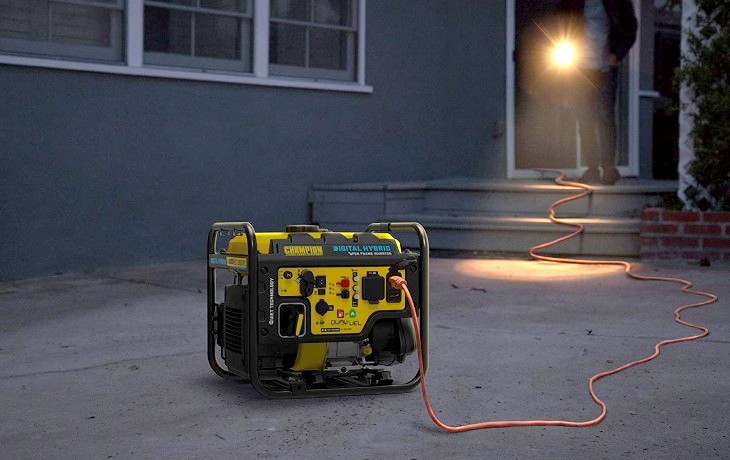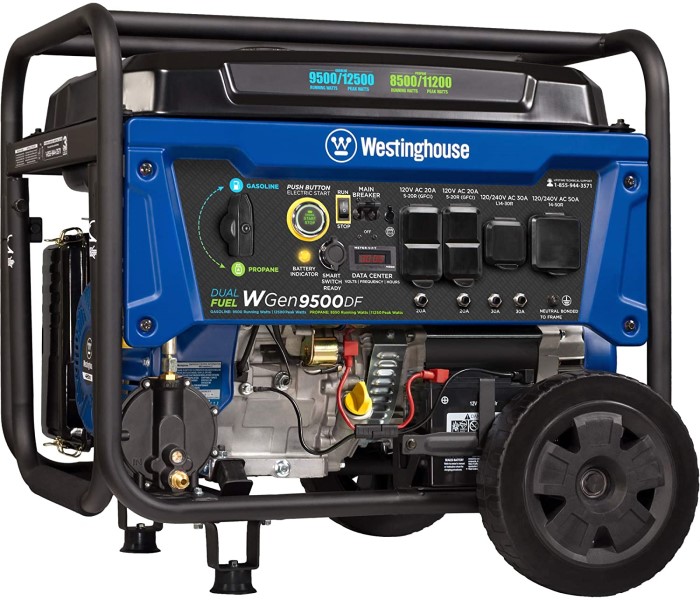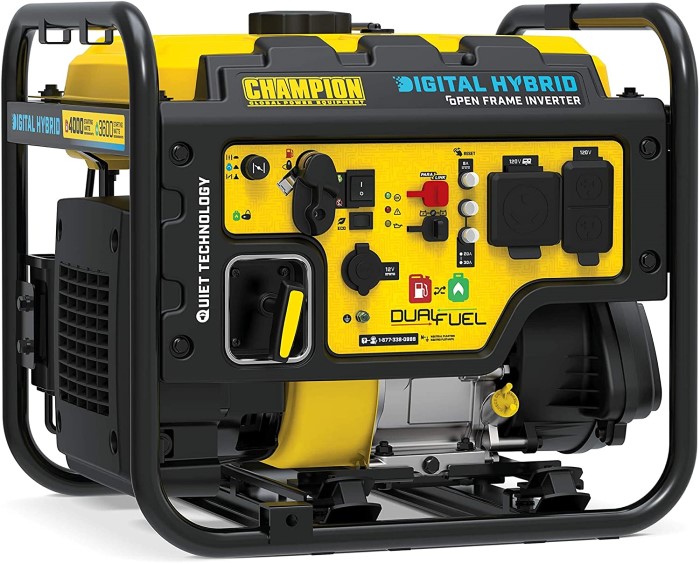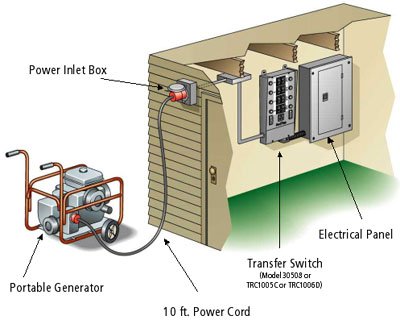Although portable solar generators are fantastic for powering small devices when you’re away from home, many people prefer these kind of semi-portable (ie. can move it around but not take it in a go-bag) fueled generators for those times when you’re sheltering at your house and want to keep things smooth during an emergency.
A common example is in the weeks after a hurricane or winter storm. There’s also a growing problem with power companies preemptively shutting down their grids to prevent wildfires.
Sometimes you just need a lot of instant juice to power larger appliances like fridges or critical medical gear when the power grid is down. And even the larger but still semi-portable solar panels won’t crank out the wattage you need.
The most important bits:
- An average 2,500-square-foot single-family home needs 2,000 watts to keep the essentials running (fridge + a few wall-plug devices) and 9,000 watts to keep enough running to feel like a normal day.
- To figure out your specific needs, add up the watts printed on the technical specs sticker found on your devices (often near the power cord or in the manual).
- Altitude can be a problem because the lack of oxygen makes gennys less effective. Expect output to decrease 3.5% for every 1,000 feet in altitude above 500 feet.
- There are three basic types of portable generators: small inverters that maximize portability, open-frame designs for maximum power, and hybrid open-frame models that bridge the two.
- Most people end up with either a gasoline-only model or a hybrid gasoline and propane generator (called “dual fuel”).
- There isn’t really a cost or benefit difference between the fuel types. Just pick whichever matches the category of fuel you’re likely to store and use anyway. eg. If you have diesel tractors and store extra diesel, then get a diesel genny.
- Although they’ve become quite efficient, you’re still limited by the fuel you have stored or access to in an emergency. You can’t assume it will be easy to get more.
- Diesel generators are relatively rare in this segment of the market, since they’re usually larger fixed-position units used for business needs. But you can find portable models if you already have diesel-powered equipment that you care about powering in an emergency.
- Most models have standard wall-socket plugs right on the unit.
- Some open-frame models can be plugged directly into a whole-house transfer switch that essentially runs power through the normal walls/sockets used in daily life.
- Those transfer switches can even be automated so it starts and transfers to the genny when the grid power dies.
- 75 people a year die in the US due to improperly using a generator. Most die from the carbon monoxide exhaust collecting inside a shelter/building. Gennys need to vent outside, and your home should have CO detectors installed anyway.
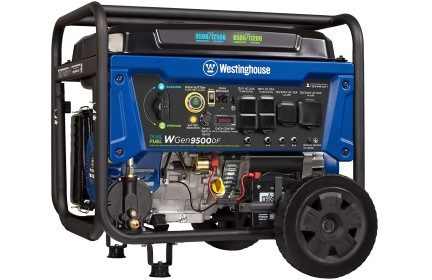
Big, flexible power:
Westinghouse WGen9500DF Dual Fuel Portable Generator
The Westinghouse WGen9500DF is one of the few dual-fuel portable generators on the market that generates over 9000 watts of power and comes from a trusted brand. It can run for up to 12 hours, has a low oil cutoff to protect the engine, and can connect directly to your house.
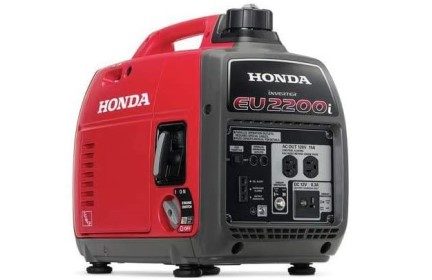
Best for most:
Honda EU2200i Gasoline Powered Inverter Generator
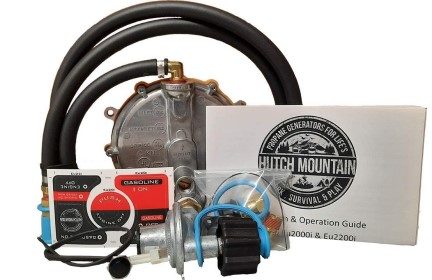
Fuel add-on:
Hutch Fuel Conversion kit
The small Honda EU2200i is one of the most consistently-recommended generators on the market. It’s small but capable, able to produce up to 2,200 watts, and is known for its quiet operation. It can run for up to 8.1 hours on less than a gallon of fuel. The latest models also feature a built-in carbon monoxide detector.
You can connect two Honda EU2200i generators with a parallel cable to double the power output. Honda also makes a special version of the E2200i specifically designed to be run in parallel that adds a 30-amp outlet that can be connected to a transfer switch.
If you want more versatility out of the Honda, you can buy the Hutch Mountain tri-fuel kit, which lets you run the EU2200i from propane or natural gas. It’s not cheap, but gives your Honda more fuel options when SHTF.
Contenders
There are more great options on the market, so check out these contenders and the general shopping tips below.
Inverter generators (small and quiet):
- Champion 2,000 watt Dual Fuel
- Generac 7127 iQ3500
- WEN 56203i Super Quiet 2,000 watt
- Westinghouse iGen2200 Super Quiet 1,800 watt
- Yamaha EF2400iSHC 2,000 watt
Open frame generators (more power):
- Black Max 7,000 watt Electric Start Gas
- DuroMax XP12000EH 12,000 watt Gas or Propane
- Honda 658060 3,000 watt Industrial
- Westinghouse WGen7500DF 7,500 watt Gas
- Winco HPS12000HE 12,000 watt Tri-Fuel
Open frame hybrid generators (larger units with inverters normally found on smaller models):
- Champion 100574 4,000 Watt Digital Hybrid Dual Fuel
- Champion 100520 8,750 Watt Digital Hybrid Electric Start w/ Quiet Technology
- Generac GP3500iO 3,500 Watt
- Honda EG2800i 2,800 Watt
- Westinghouse iGen4200 3,500 Watt Digital
Be prepared. Don’t be a victim.
Want more great content and giveaways? Sign up for The Prepared’s free newsletter and get the best prepping content straight to your inbox. 1-2 emails a month, 0% spam.
How much generator do you need?
It’s helpful to have at least a rough idea of how much power you need before you go shopping. Some rough calibration:
- 1,000 watts = hook up a few lights, rechargeable batteries, and portable digital devices
- 3,000 watts = power many household lights and one or two appliances (fridge, microwave, sump pump, etc.)
- 9,000 watts = enough to run an average family home normally
Electrical output capacity translates directly to weight and cost of the generator. So be realistic how much power you really need. Do you really need to power everything like normal? Probably not. Try to prioritize and focus on the basics: important medical devices, fridge/freezer, lighting, space heaters, USB-powered devices, one computer, etc.
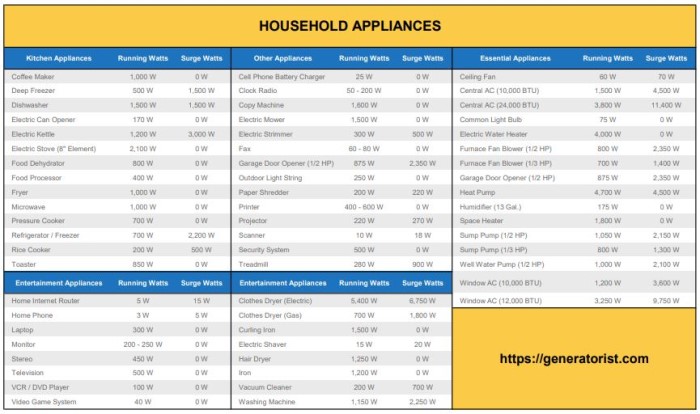
Honda — a top brand in the generator space — has a great calculator that allows you to easily enter the quantity of each appliance rather than assuming you only have, say, one TV or four lights.
If you want to be more exact about your energy needs, use a Kill A Watt to measure how much your larger appliances actually consume. You simply plug your appliance into the meter and then plug the meter into the wall.
However you tally your total wattage needs, it’s a good rule of thumb to pad that number by an additional 20%.
Don’t ignore surge wattage
Many devices need a surge of more power when they power up or start a cycle. A refrigerator, for example, might only need 700 watts to idle but a whopping 2,200 watts to start the condenser cycle. Same story with heaters, air conditioners, some computers, and similar gear that either goes through a cycle or deals with heat/cold.
Types of generators: inverter vs. open-frame vs. hybrid
Inverter generators are the smallest, lightest, and thus most-portable type. They’re very popular among campers, RVers, etc. The design is typically an enclosed housing. The housing muffles the noise, making it quieter, but that also makes the engine harder to access for troubleshooting and repairs.
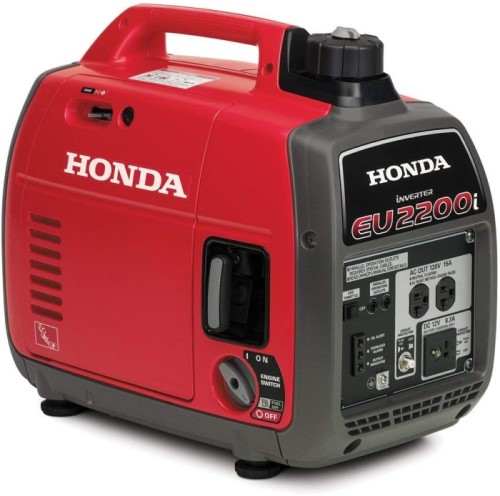
These engines are very fuel efficient in part because they’ll adjust the throttle based on your power draw.
Inverters typically produce around 2,000 watts. However, good models can be hooked up together in parallel to multiple units, amplifying your power output. That feature is why some people choose to have multiple of these smaller units for redundancy and flexibility instead of one larger unit — yet they can chain them together if they need a lot of juice for a high-wattage device.
Open-frame generators are the larger workhorses of the market. The larger engines offer the best wattage-per-dollar and have a wider range of accessories and uses. The easily-accessible engine stays cooler because of more airflow.
Typical output is 3,000 – 12,000 watts. Unlike inverters, these larger units can hook into whole-house transfer units.
They’re still semi-portable, but not like the inverters where you’d throw them in a car and go camping. You’ll often see open-frames around farms, construction sites, and the homes of more advanced preppers.
Hybrid generators (aka. open-frame inverters) try to combine the strengths of each type. Energy output is higher (around 4,000 watts) because of the larger open-air engines. While the inverter improves fuel efficiency and makes it safe to plug in smaller electronics.
Something to note: marketing language might sometimes use the word “hybrid” to mean multiple fuel sources, not necessarily inverter functionality.
Fuel options: gasoline vs. propane vs. diesel
Modern tech had made fuel efficiency, cost, and noise roughly the same between the fuel types. They are all consumed at roughly equivalent traits, typically from 12-24 gallons per day depending on electrical load.
When you break down the math for cost per kilowatt, diesel is the cheapest, gasoline is in the middle, and propane is the most expensive — but the difference is pennies per day, so while technically different, fuel cost just isn’t much of a deciding factor anymore. Similarly, some claim propane has 10-15% lower power output than gas for comparable generators, but in practice this doesn’t affect your buying decisions.
What does matter is fuel accessibility. You will most likely be limited to whatever fuel you have stored before the emergency, unless you get lucky and/or fight the crowds for limited resources at gas stations.
More: Best gas cans and how to store gas at home (does gas go bad?)
Storage is different between fuel types. Gasoline and diesel go bad surprisingly quickly, while propane can be stored indefinitely. So don’t assume you can put a can of gas in your shed and then use it 10 years from now when an emergency hits.
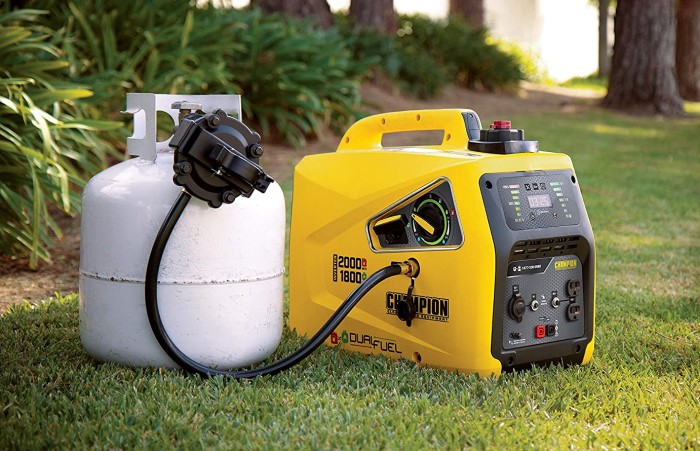
Propane burns cleaner than gas, so some people make the tie-breaking choice based on that alone.
Can’t choose between fuels? Then don’t! Dual-fuel and tri-fuel generators bypass the debate, providing valuable flexibility during unpredictable times.
Plugging devices into the generator
For basic needs, such as just powering a few smaller devices with an inverter, it’s as easy as plugging in the device’s built-in power cord. Most generators will have a variety of outlets on the chassis supporting different amperage ranges: from RV-compatible 120V/30A, 12V DC, 20V/20A standard 3-prong household, and USB adapter outlets.
For larger needs, you’ll want to use heavy-duty, all-weather extension cords to run the power from your outdoor generator into your house. But you’re best off investing in some generator-specific cords to split the larger 30-amp connections into household-usable 20-amp outlets. The Champion 25-Foot 30-Amp 125/250-Volt Extension Cord will get the job done.
Plugging the generator into your house
More robust setups can take a little more forethought, even to the point of hiring a local electrician to help with the house wiring.
That’s because even though a larger generator might put out 9-12 kW of power, there’s no simple way to use all of that power through normal extension cords. Even if you could run everything over external cords, you still have to leave doors/windows open to run the cords in from outside, it’s a hassle, etc.
So if you want things to be easy, automated, not require extension cords and replugging things, to power all of the possible devices in your home, and/or expect to be powering your home for long stretches of time, that’s where transfer switches come in.
A transfer switch and panel with a special outlet for generator power input provides your home with all the wattage your engine supplies. The outlet and transfer switch should be professionally installed, typically near your meter or breakers. When you need to switch to generator power simply plug in and toggle the transfer switch to generator mode.
Depending on your needs and the size of generator you choose, the transfer switch can replicate your entire system or you can configure it with only the essential circuits that you’d want powered during an outage — eg. water pump, furnace, some outlets, and lights.
Transfer switch connectivity isn’t just about convenience and power: it’s the only legal way to hook a generator directly into your house’s electrical system. It prevents generator power from backfeeding through your main panel and into power lines, where it can harm electrical workers trying to restore power for everyone.
Similar to the standard transfer switch, Generlink is a newer, proprietary device that’s more costly up front but easier/cheaper to install. Depending on the location of your meter, this device takes a slightly less invasive, less unsightly approach. For optimal power and fuel efficiency, you’ll want to manually turn off some breakers when running generator power through a Generlink if your model lacks the capacity to service the entire house.
Running in parallel
Many inverter generators can be run in parallel to combine their capacities. For example, you can pair two Honda EU2200i generators together to get a total of 4,400 watts of output. However, each outlet still has its own limits: a 20-amp outlet won’t magically become a 40-amp outlet just because you connect another generator.
Besides making it easier to carry multiple thousands of watts by hand, spreading the load across multiple engines also reduces the wear and tear on a given unit.
The big drawbacks are that two inverters in parallel will probably still be less capable than a single open-frame generator. And it’s overall less cost effective.
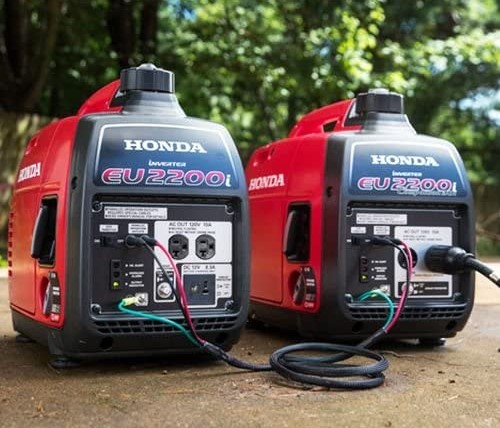
You can theoretically pair different models/brands together, but it’s a good idea to stick within the same model or close family. In fact, Honda recommends only pairing generators that are within certain serial number ranges.
Honda even makes a version of the EU2200i specifically for pairing: the EU2200IC, which features another regular 20-amp outlet and a 30-amp outlet that can be connected to a transfer switch.
High altitudes
An engine needs three things to run: fuel, fire, and air. Generators, like any engine, lose power at altitude due to the thinner air, which causes the fuel mixture to be too rich. Gasoline generators lose about 3.5% of their power output for every 1,000 feet of elevation over 500 feet.
You should check with your generator manufacturer for advice on improving its performance at high altitudes. Honda has a PDF with recommendations. In essence, you either need to increase the airflow or restrict the fuel supply. Many manufacturers sell kits to improve generator performance at altitude.
For gasoline generators, this procedure is called “re-jetting,” in which you replace the carburetor’s jet to better tune it for the thinner air. If you’re uncomfortable modifying a carburetor, a small-engine mechanic should be able to perform the modification for you.
Another thing you can do is fuel your generator with 85 octane gasoline. 87 is the standard octane rating in most of the United States, but high-elevation regions often offer 85 octane, which runs better in thin air.
Safety
The majority of Hurricane Laura deaths in 2020 were linked to carbon monoxide poisoning from incorrect use of portable generators. Just five minutes of exposure to carbon monoxide can be fatal.
To avoid becoming another statistic, position your running generator outside, 20 feet from your house with the exhaust directed away from buildings and windows. Do not operate your generator in an attached garage, even with the door open. Carbon monoxide is odorless and invisible and there is no way to guarantee that slight drafts, or lack thereof, won’t cause the gas to build up in your “open” garage.
A high-quality, waterproof, handheld carbon monoxide monitor such as the Sensorcon Inspector is a smart investment if you plan to run your generator in a space that might restrict proper ventilation.
Most generators aren’t meant to operate in the rain. So you’ll need to plan ahead for adequate sheltering if your power outages are usually brought on by storms. We recommend building a small enclosure for your generator (which can also help prevent theft) or some other kind of overhead barrier.
Maintenance
Engines need love, even when they’re just sitting in storage for a long time. Some tips:
- Fire it up for 20 minutes every once in a while. Some people do it monthly, but you should at least do it as part of your annual prep review.
- If it will be stored for a long time, drain the fuel out first so it doesn’t gum up the carburetor. Make sure to drain the fuel tank, gas lines, and the carburetor, which usually has an easily accessible drain screw. A siphon can help drain the tank.
- You can also add fuel stabilizer to the gas tank.
- Change the oil after every 100 hours of operation (or per manual). Different climates can have different oil needs, so again, check the manual.
- Change spark plugs after a few hundred hours of operation. It’s also a good idea to keep a few spares on hand.
- Inspect and replace filters as needed. Foam filters can be washed.
